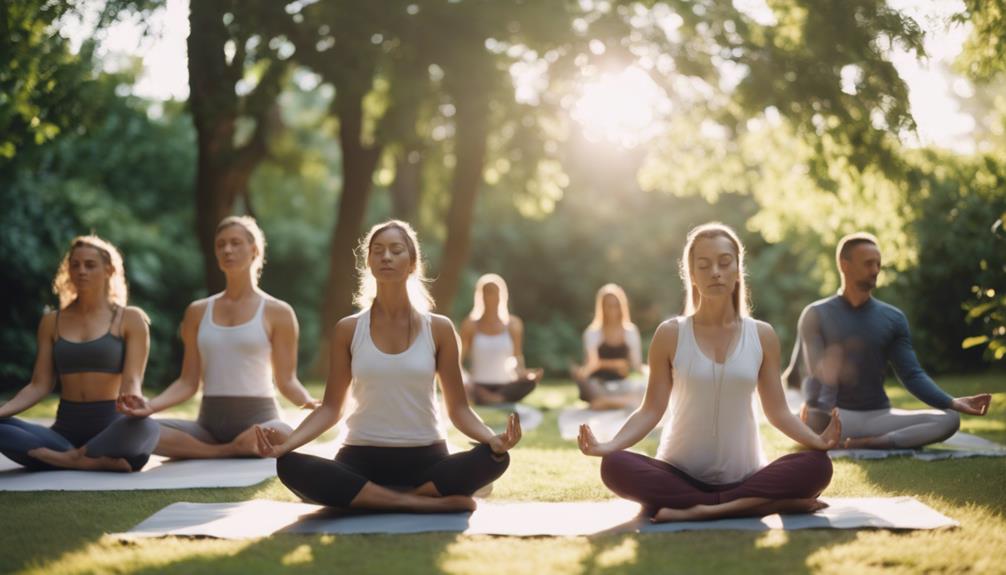Yoga is a practice that encompasses a variety of poses, or asanas, each with its own unique benefits and significance. One such pose is the Sunbird Pose, a dynamic and engaging posture that combines elements of balance, stability, and core strength. This article delves into the nuances of the Yoga Sunbird Pose, exploring its historical significance, practical implementation, and benefits, while providing guidance for practitioners at all levels.
Understanding the Basics of Yoga Sunbird Pose
The Sunbird Pose, also known as "Chakravakasana" or "Bird Dog," is a foundational yoga posture that promotes balance and stability. It is typically performed on all fours, with the practitioner extending one arm forward and the opposite leg backward. This pose encourages proper spinal alignment, engages core muscles, and cultivates coordination. It serves as a bridge between strength and flexibility, making it accessible for both beginners and more experienced yogis.Yoga And Meditation Course
To perform the Sunbird Pose effectively, it is crucial to maintain a neutral spine and engage the core muscles. The pose not only strengthens the back but also enhances focus and concentration. Practicing the Sunbird Pose can serve as a warm-up for more advanced asanas or a standalone exercise to incorporate into one’s daily yoga routine.
The Historical Significance of Sunbird Pose in Yoga
The Sunbird Pose has roots in traditional yoga practices that emphasize the connection between the body and mind. It embodies elements of ancient philosophies that celebrate the balance of opposing forces, such as strength and flexibility. The pose is often linked with the notion of "prana" or life force, as it encourages the flow of energy throughout the body.
Historically, poses like the Sunbird have been used in various yoga styles, including Hatha and Vinyasa, to cultivate mindfulness and presence. The fluid movement in Sunbird Pose reflects the dynamic nature of life, reminding practitioners to stay grounded while reaching for their goals, much like a bird in flight.
Step-by-Step Guide to Perform Sunbird Pose Safely
To begin the Sunbird Pose, start in a tabletop position on your hands and knees. Ensure that your wrists are directly under your shoulders and your knees are hip-width apart. Take a moment to center yourself, breathing deeply and finding your balance.
Next, as you inhale, extend your right arm forward and your left leg backward, keeping your hips level and your core engaged. Hold the pose for a few breaths, maintaining a straight line from your fingertips to your toes. On an exhalation, return to the starting position and repeat on the opposite side. Always focus on maintaining a neutral spine and avoiding excessive arching or rounding of the back.
Common Benefits of Practicing Yoga Sunbird Pose
Practicing the Sunbird Pose offers numerous physical and mental benefits. Physically, it strengthens the core, back, and gluteal muscles, promoting improved posture and spinal health. The pose also enhances balance and coordination, which can be beneficial for overall athletic performance and daily activities.
On a mental level, the Sunbird Pose promotes focus and concentration, encouraging practitioners to connect with their breath and body. This mindfulness can help reduce stress and anxiety, fostering a sense of calm and clarity. Regular practice can lead to improved body awareness and a greater understanding of one’s physical capabilities.
Muscles Engaged During the Sunbird Pose Practice
The Sunbird Pose engages multiple muscle groups throughout the body, making it a comprehensive exercise for strength and stability. The primary muscles involved include the rectus abdominis (core), erector spinae (lower back), gluteus maximus (buttocks), and the deltoids (shoulders). These muscles work together to maintain proper alignment and balance during the pose.
Additionally, the Sunbird Pose also activates the hamstrings and quadriceps in the extended leg, as well as the muscles of the upper back. This multi-muscle engagement is what contributes to the overall strengthening and stabilizing benefits of the pose, making it an effective addition to any yoga practice.
Modifications for Beginners in Sunbird Pose
For beginners, modifications can help make the Sunbird Pose more accessible while still reaping its benefits. Those who may struggle with balance can practice the pose against a wall for added support. Additionally, using a yoga block under the extended hand can help maintain a strong foundation and promote proper alignment.
Another effective modification is to perform the pose with only one limb extended at a time. Beginners can focus first on extending the arm or leg individually, gradually building strength and confidence before attempting to extend both simultaneously. This approach allows practitioners to familiarize themselves with the body mechanics involved in the pose.
Tips for Achieving Proper Alignment in Sunbird Pose
Achieving proper alignment in the Sunbird Pose is essential for maximizing its benefits and minimizing the risk of injury. It is crucial to maintain a neutral spine throughout the pose; this means avoiding excessive arching or rounding of the back. Keeping the neck aligned with the spine will help prevent strain and promote a smooth flow of energy.
Additionally, practitioners should focus on distributing their weight evenly between the supporting limbs. Engaging the core is vital for stability; drawing the navel toward the spine can help maintain balance and alignment. Regularly checking in with one’s body during the pose can reinforce proper alignment and enhance the overall practice.
Potential Risks and Precautions for Sunbird Pose
While the Sunbird Pose is generally considered safe for most practitioners, there are potential risks that should be addressed. Individuals with wrist, shoulder, or knee injuries should approach this pose with caution, as the weight-bearing nature may exacerbate existing conditions. It’s advisable for those with chronic pain or injuries to consult with a healthcare professional before practicing the pose.
Additionally, practitioners should be mindful of their body’s signals during the pose. If discomfort arises in the lower back or neck, it may be necessary to modify the pose or take a break. Being aware of one’s limits and practicing with mindfulness can help reduce the risk of injury and promote a positive experience.
Integrating Sunbird Pose into Your Yoga Routine
Incorporating the Sunbird Pose into a yoga routine can enhance the overall flow and effectiveness of the practice. It can serve as an excellent warm-up to prepare the body for more challenging postures or as a transitional pose between sequences. Practitioners can also include it during balance-focused sessions to improve stability and coordination.
To maximize benefits, it is recommended to practice Sunbird Pose regularly, ideally incorporating it into a well-rounded routine that includes strength, flexibility, and relaxation. By integrating the pose thoughtfully, practitioners can experience its full spectrum of physical and mental advantages.
Frequently Asked Questions About Sunbird Pose
Q: Is the Sunbird Pose suitable for beginners?
A: Yes, the Sunbird Pose is generally suitable for beginners. With proper modifications and focus on alignment, it can be safely practiced by individuals new to yoga.
Q: How long should I hold the Sunbird Pose?
A: Beginners may start by holding the pose for 5-10 breaths on each side, gradually increasing the duration as they become more comfortable and confident in their practice.
The Yoga Sunbird Pose is a versatile and beneficial asana that can enhance physical strength, balance, and mental focus. Understanding its historical roots, learning how to perform it safely, and being aware of its benefits and risks can significantly enrich one’s yoga journey. By incorporating the Sunbird Pose into a regular practice, practitioners can cultivate a deeper connection with their bodies and minds, ultimately fostering a more holistic approach to wellness.


